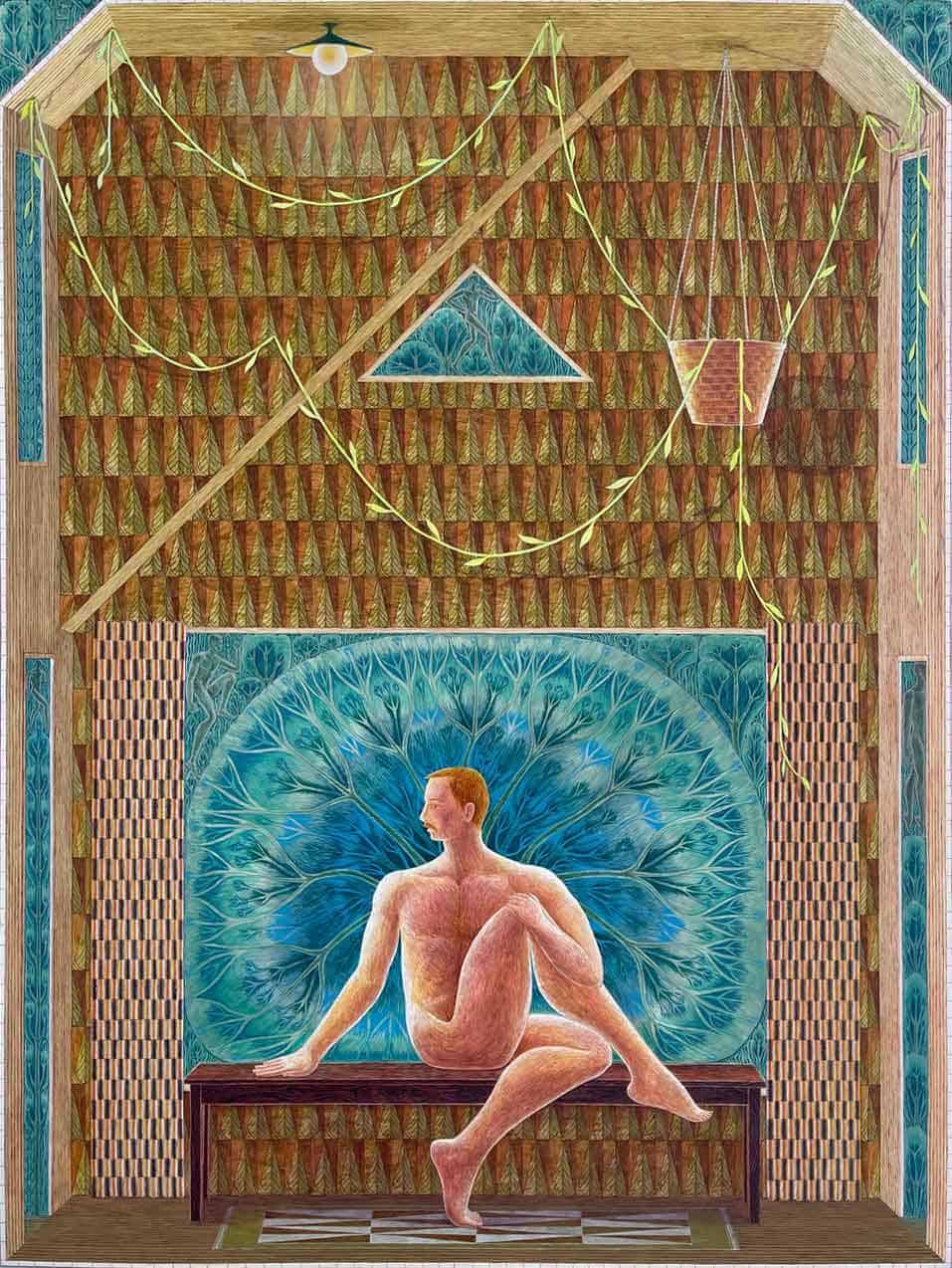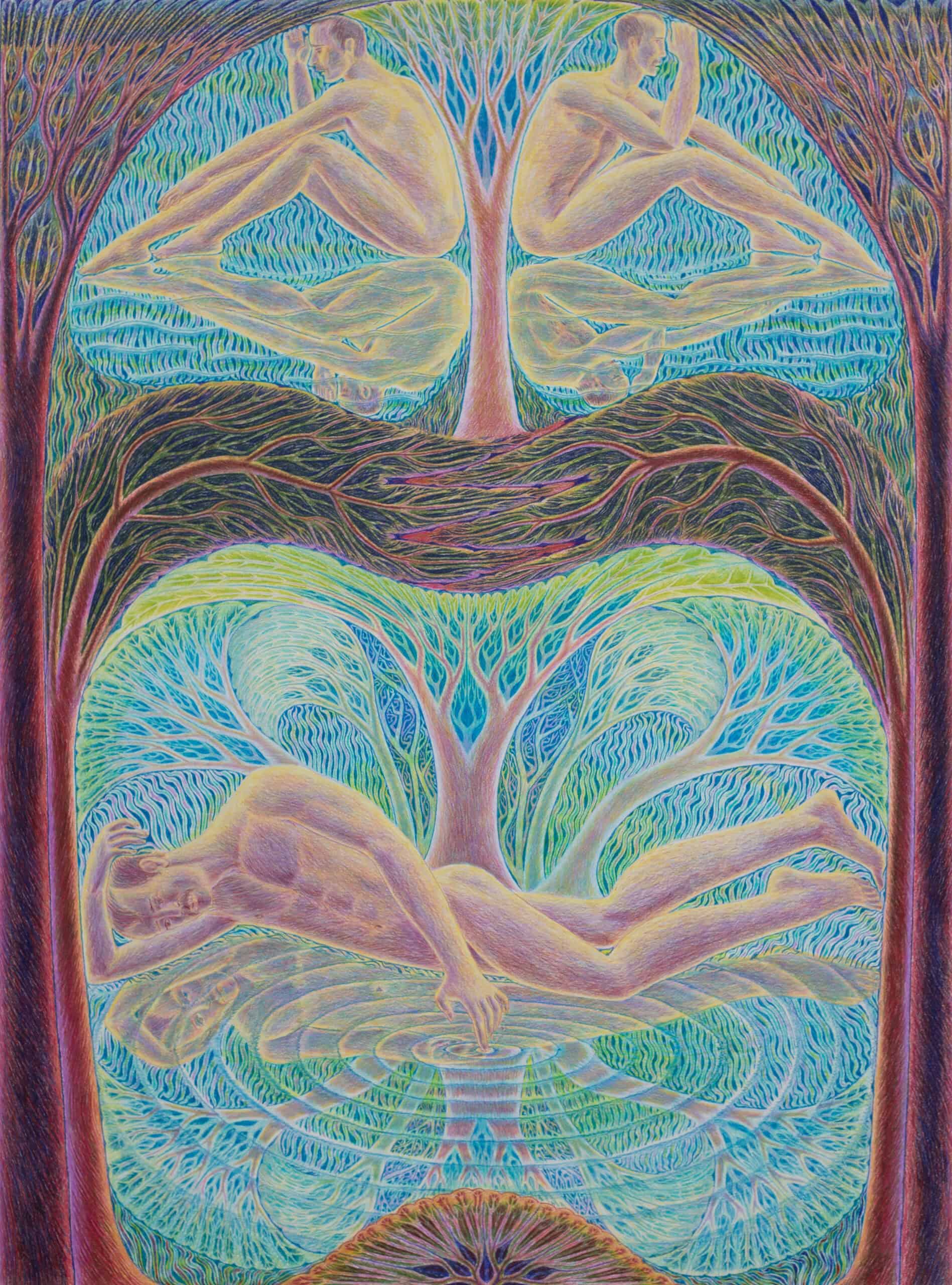
Bryan Rogers, Hanging Out, 2025
Working closely with art historical references such as swimmers, bathers, men at work, and a nude figure in forests, Bryan Rogers reinterprets classic figurative painting through a queer and synergetic lens. Infusing his pieces with a raw honesty as he depicts his community and meditations, he returns the nude figure into the natural space, harmoniously situating them within their wild surroundings. In doing so, the vibrant and wild flora coexists with man.
Returned once again to be a part of nature, Rogers figures aren’t fearful, they resemble nothing of prey. They are raw—clumsy and contorting—but with the fronds and leaves protecting their bodies they can exist free of any inhibitions. The woods are man’s natural habitat—a place to be fragile, strong, nude, alive. The men in Hanging Out (2025), Here and There (2024), and Untitled (2024) don’t bear any shame or embarrassment, so long as they exist within the boundaries of Rogers’ paintings they are able to find comfort in their vulnerability. It creates an almost paradoxical tension twofold: between the historical nude figure’s unease in such a setting and the placidity of Rogers’ bodies amongst unruly vibrant nature.

Bryan Rogers, Untitled, 2024
Inspired by the patterns and symmetries that are mirrored across humans and nature, the tessellating colours of Rogers’ settings harken back to the Viennese Secession and Art Deco movements, as well as Fold and Decorative arts, continuing his play with the art historical. In Untitled (2024), the layers of snaking brachial branches spread across two realms, forming an abdomen—the aorta, the lungs, the curve of a diaphragm, and the womb holding a sprawled man to rest, reflect, and introspect. The stems crawl out from behind the figure and across the paper, mirroring the symmetries of what is contained within his body, a solitary space to nurture his authentic self.
Each painting is entrenched in Rogers’ own experience as a queer man, basing the figures on his closest familial and familiar middle-aged queer men—himself, his partner, and his brother. By depicting them as serene, animalistic existences Rogers rejects the idea of queer men as either predators or victims, celebrating a symbiotic cohabitation with one’s surroundings. Illuminating the relationship between queerness and authenticity within organic and constructed spaces, he reflects his interactions with the world as a queer man.
Reckoning with one’s true self and performed personas, some of Rogers’ recent works work beyond exteriors, bringing the wild into what would otherwise be shelter, as in Hanging Out (2025). A structured, geometric building contrasts against the psychedelic, free-forming flora outside. Leaning upon his existing theme of transcendent wildernesses, this construction of an enclosure speaks to man’s attempts to dominate and deplete nature, and simultaneously, our creation of false personas in attempts to protect our true identities. But, much like how Rogers’ timber homes are unable to prevent the wild from creeping in, our authentic selves will eventually erode their way into how we engage with the world
(By Teddy Woods)
